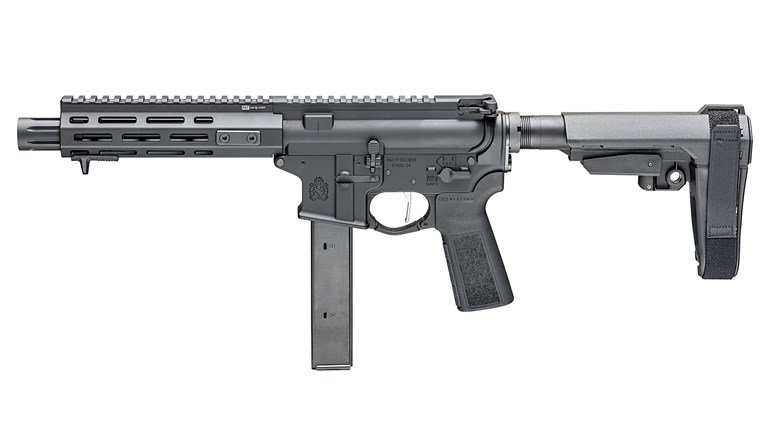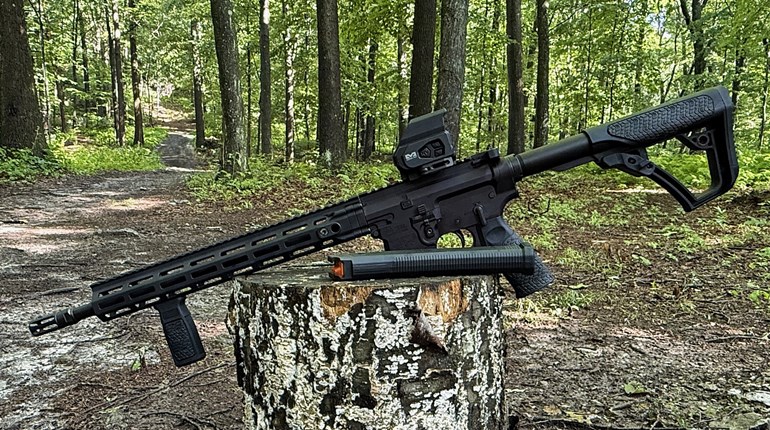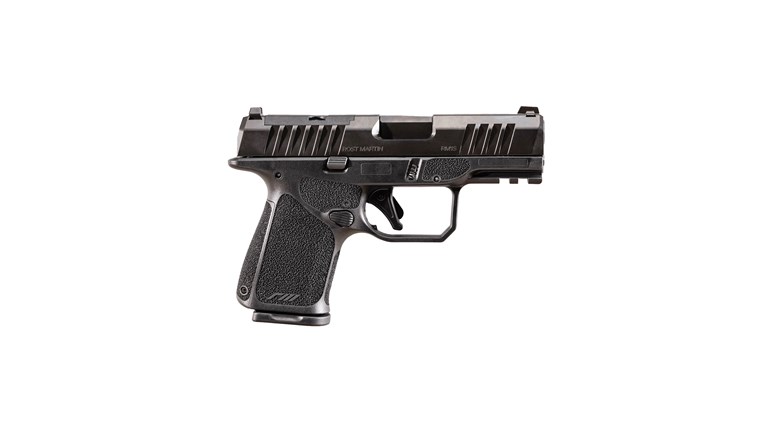
The SIG Sauer MPX is advertised as competition-ready right out the box, and at first glance that appears to be the case. This particular MPX was already out of the box and handled by the time I arrived to pick it up. As I was examining it for the first time, the MPX drew a crowd of employees at Parabellum and at least one patron wanting to get a good look at this carbine. Their mouths were watering and their full attention was on this fine-looking PCC; a squad of Hooter’s girls in uniform would have gone totally unnoticed in the showroom. This is one fine looking gun.
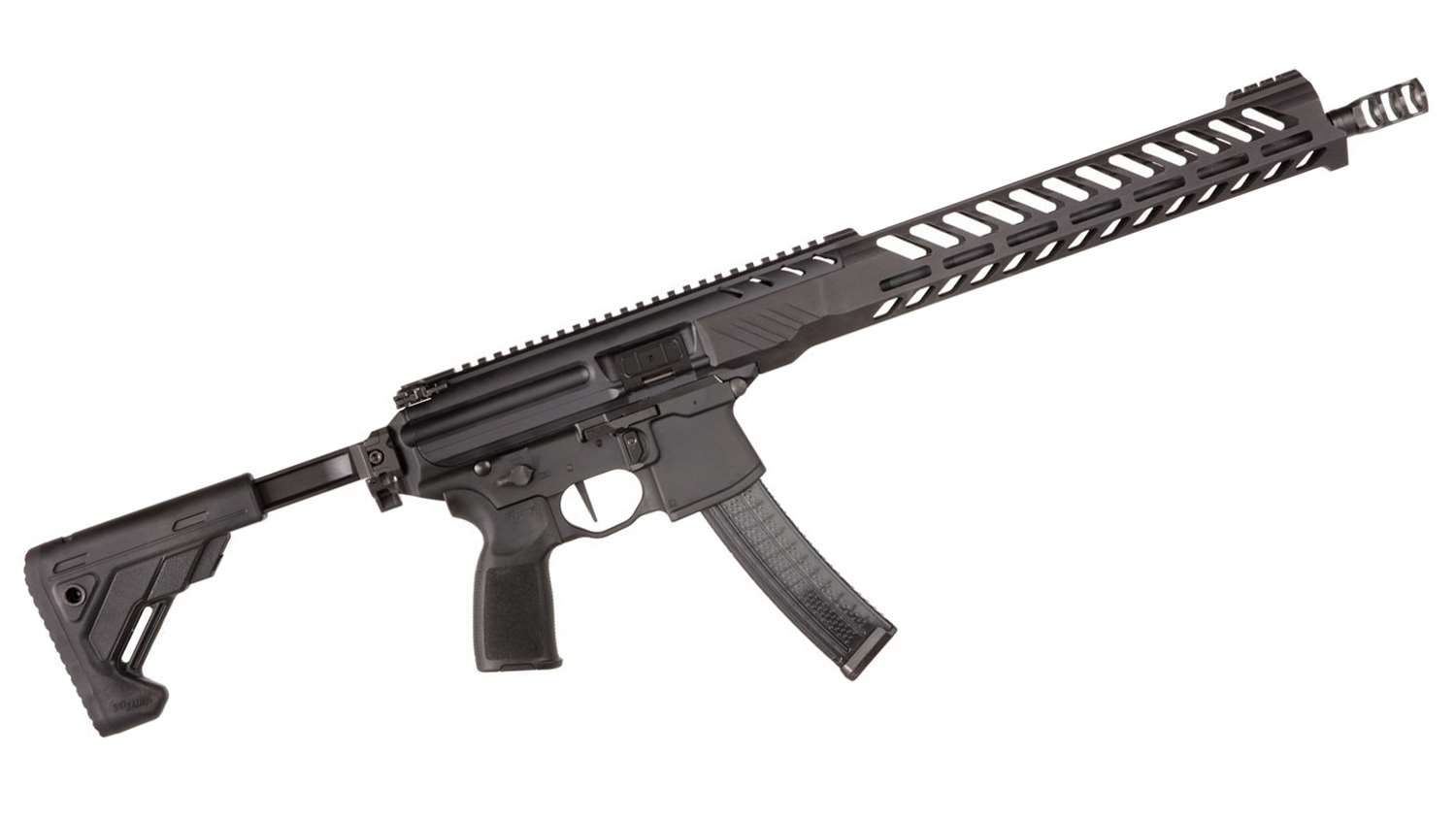
The MPX weighs seven pounds exactly and has skeletonized forearm that has a rail on the muzzle end for sights and a section of rail above the receiver as well. The MPX has a compensator that redirects gas very well for keeping the carbine on target for fast splits. The stock is five-position adjustable, foldable, and removable by design. The trigger on this gun is sweet; the Timney single-stage MPX trigger may be the best feature on this well-designed carbine. Jake Martens owned a Gen 1 model of the MPX, as did many others, and the biggest issue with that particular model was the factory trigger. It was heavy, with a lot of creep and at the time no real good aftermarket trigger was available. The competition-ready MPX has addressed this issue. With no pre-travel, it sits at a very crisp three-pound release with a very short, positive reset. No one would believe that this is the “factory” trigger that comes on this from the box, but it is. The trigger is straight and from the side appears almost dagger-like—which is appropriate because this crisp trigger will be a dagger through the heart of your competition.
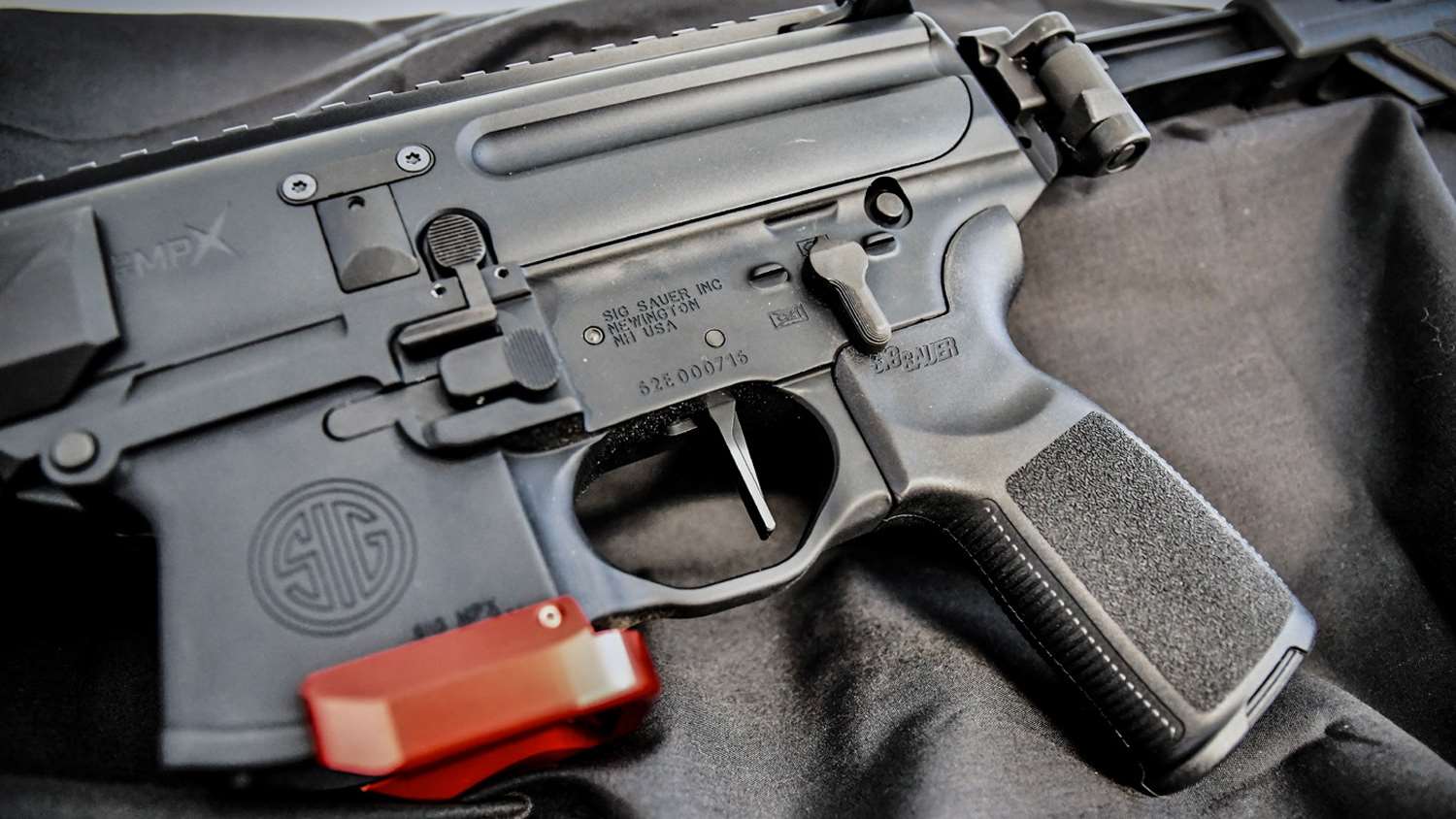
The hat comes off to the design team at SIG. They have a well-designed carbine with the right features. The MPX has redefined the submachinegun category with a new level of operator safety, in-field adaptability, and proven reliability in the harshest environments. This rigorously designed and tested carbine is built around a gas-operated short-stroke piston system which reduces recoil and fouling. A fully locked and closed rotating bolt system provides maximum safety in case of bullet obstruction. The MPX also features AR-style ambidextrous controls, making it well-suited for both right and left-handed shooters. The fire control selector, magazine catch, magazine release and charging handle are all ambidextrous. Other features include a monolithic upper receiver with an integral M1913 rail and free-float barrel system. The carbine is easy to adjust into different configurations with different barrel lengths, rail-adaptable handguards and stock options.
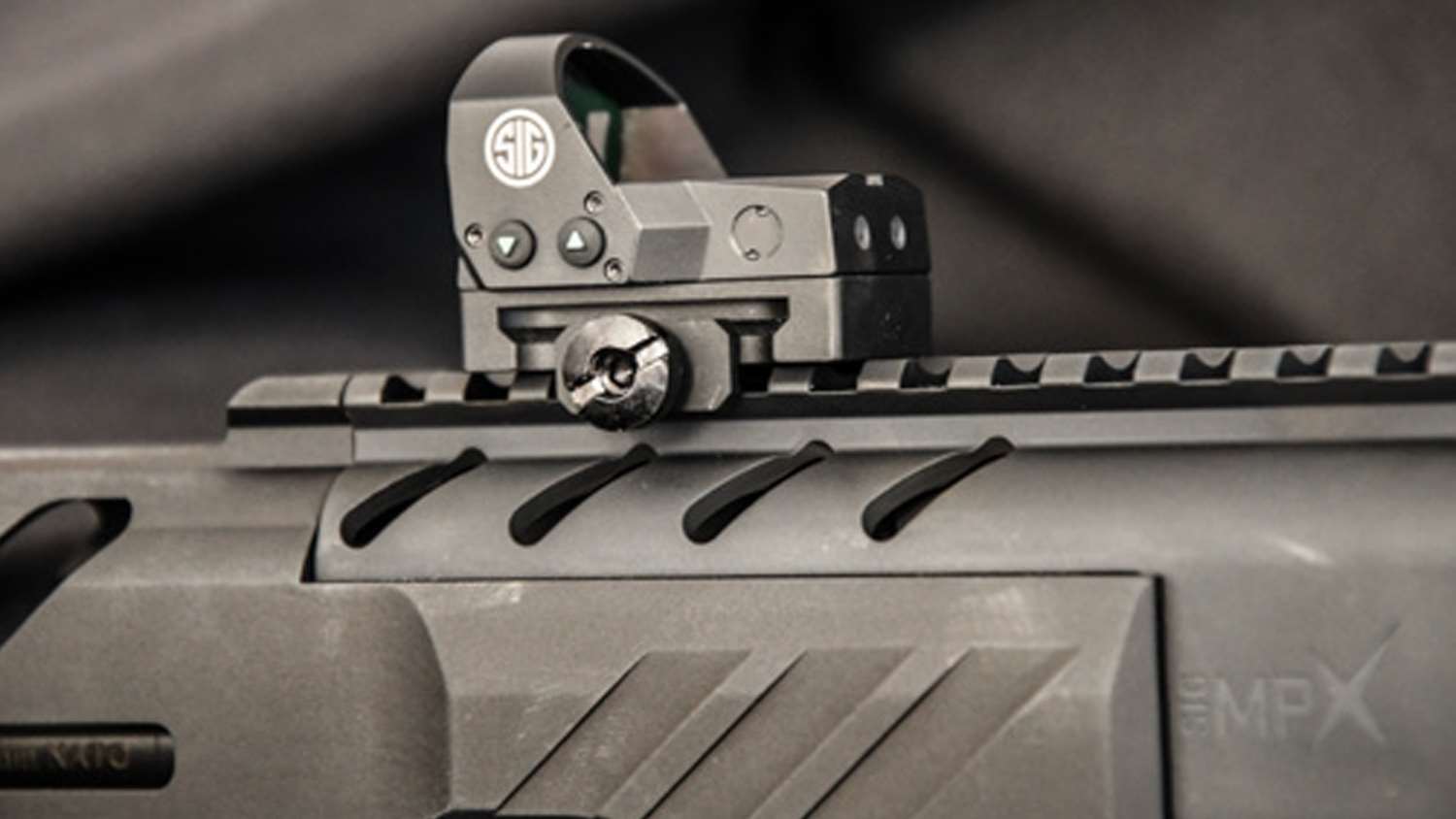
With the popularity of the Pistol Caliber Carbine division, SIG was quick to respond and offer this competition-ready model. The only things necessary to make this MPX carbine range-ready is to slap your favorite dot on the rail and get out to the range. For testing purposes, the SIG Romeo 1 was installed on the MPX. The other two additions were a magwell by Springer Precision to aid in smooth reloads and their plus-10 basepads. Springer Precision, based in Redmond, OR, has been making accessories for all the popular handgun platforms, and was one of the first companies to offer MPX upgrades. The magwell is machined from USA-produced aluminum in their Redmond factory and is designed to meet the needs of competition shooters by enlarging the magwell opening to ensure clean, fast reloads. With an open-front design, it allows you to slam home a reload without fear of pinching fingers. The plus-10 magazine basepad, also made from high-quality aluminum, is hard anodized to provide an ultra-durable platform. They are easy to install and remove and clean when necessary. Springer Precision now offers an extra power spring when using these extensions. It is not necessary for normal feeding but to allow for bolt hold open on last shot fired. We ran the plus-10s, but check out the Xtensions basepads offered by Springer, designed to interlock with each other, adding up to seven rounds per Xtension. With some modifications to the follower and using the Extra Power Spring and Xtensions, you can go from a 30-round factory mag to 40, 47 or 53 rounds. No mail-order subscription for pills is necessary to get more out of your factory magazine with the Springer Precision basepad and XTensions.
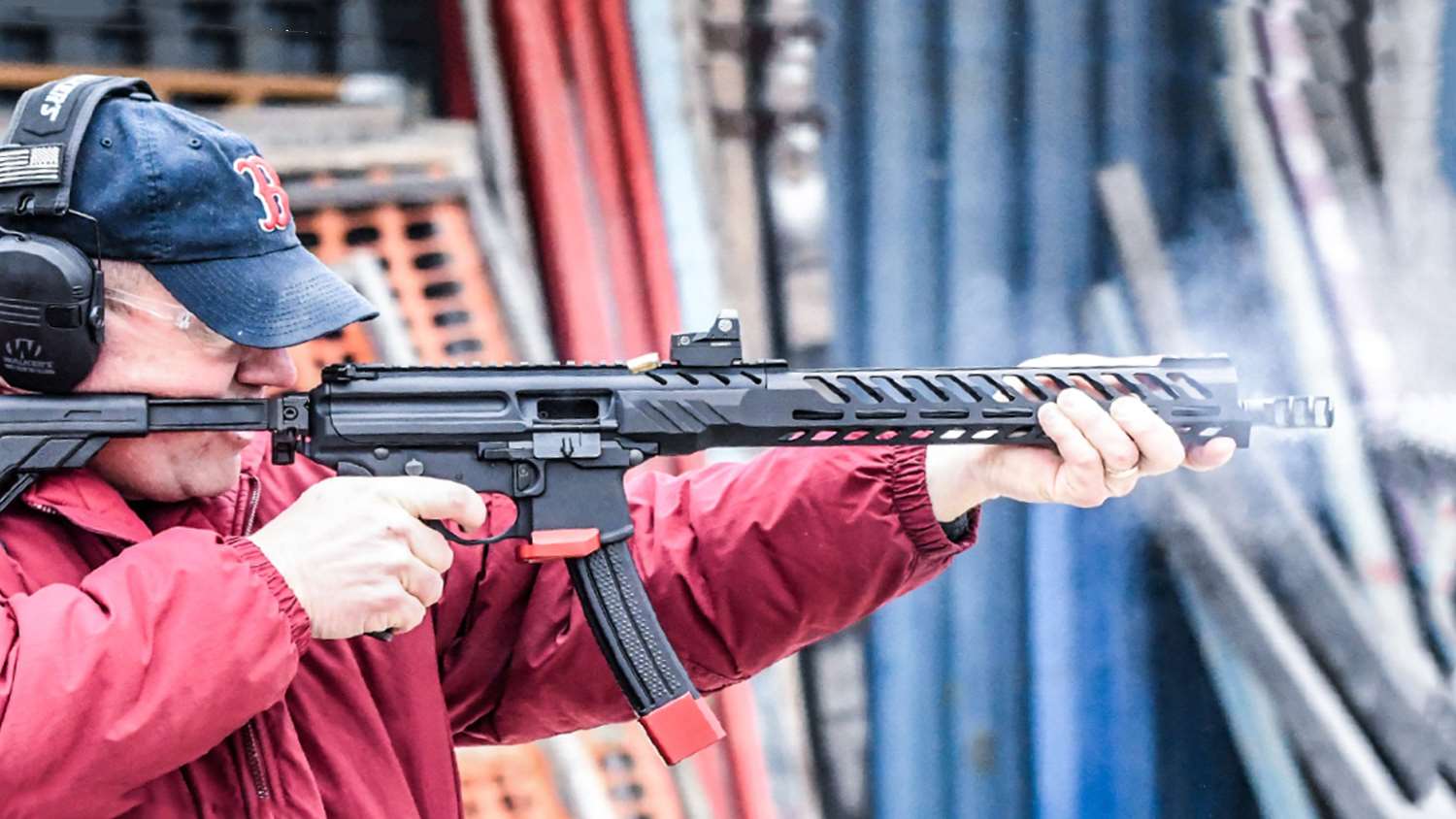
Jake Martens and I both tested this gun on the range. The shooting test for this gun was different than our standard practice of shooting drills—for this testing, we shot an indoor USPSA match at Parabellum, and a Steel Challenge match at the Riley Conservation Club. It does not matter how much testing is done before the match, it is still possible to have the gun or other gear let you down in the match. Jake and I decided to do no practice or testing of the gun, just take it to a couple of matches and let the chips fall where they may. The ammo we used was SIG Sauer Elite Performance Full Metal Jacket at 147 grains, and other than about 10 rounds to confirm the dot was where it needed to be, the gun had not been fired prior to the first match.
There was a grand total of six PCC shooters in this first indoor match. Local Grand Master shooter, Greg Harrell, was on hand to provide stiff competition for the field and to provide some context for the shooting results. Leveling harassment at PCC shooters is a favorite hobby of mine, so actually shooting PCC in public created a great opportunity for payback, and even some piling on by folks who do not even shoot PCC. It is not really a match without some good-natured harassment.
Stage 1 of the night was a 32-round field course requiring six shooting positions. Starting in a box, the shooter had to retreat out of the box to enter the shooting area, which required 10 more feet of retreat, then the shooter moved to the left across the range while engaging targets 10 to 12 yards distant from three additional positions, advancing down range for the last two positions. For an indoor match, there was a fair amount of movement. The retreating and lateral positions allowed for shooting on the move if the shooter chose to go that route. Jake laid down the fastest time on the stage at 17.52 seconds but a mike hurt his score. Greg was second fastest with a time of 18.83 but won the stage on points. I was well in the distance time-wise at 20.16 seconds, but the big hurt was the two mikes that ended up just below the perforation of the no-shoot. At the end of the run, I felt confident that it had been a great run. It went smoothly and the gun felt good while shooting; however, lack of attention to hold over made the results less than desired.
I have seen monkeys at the Indianapolis Zoo juggle Nerf balls while sitting on a tree limb with more grace than we demonstrated on these reloads ... However, our lack of skill is not a gun problem.
Stage 2 was a three-position, 16-round course of fire. The start position was in the middle and required moving to the left and right to complete the stage. There weren’t any no-shoot targets here, so it was probable that my score would improve. Jake was able to take the stage with an 8.04 second run, I was second with 8.98 seconds and Greg was third 8.53 seconds but with a mike that allowed for the lowly PCC noobs to slip past him on the scoresheet. With the weight and fit of the MPX to the shoulder, the second array of targets could be shot on the move with good hits. This PCC thing is fun and the MPX is running without a hiccup.
Stage 3 was the classifier, Can You Count, where a reload would come into the mix for the first time. Greg, Jake and I all achieved full points on the targets—with no penalties during the stage. Greg won the stage with a real solid time of 7.57 seconds. Here, making a couple of smooth reloads was the key. Jake and I were reloading from a Clay County magazine pouch (back pocket); I finished second on the stage with a time of 11.07 seconds with reloads that were not in danger of being called graceful. Jake logged a time of 11.38 seconds and pulled the trigger a great deal faster than me, but reloaded with even less grace. I have seen monkeys at the Indianapolis Zoo juggle Nerf balls while sitting on a tree limb with more grace than we demonstrated on these reloads. However, our lack of skill is not a gun problem. The release of the magazine was actually easy and smooth due to the MPX design, but the insert of the fresh magazine was problematic. I think some practice time should be scheduled.
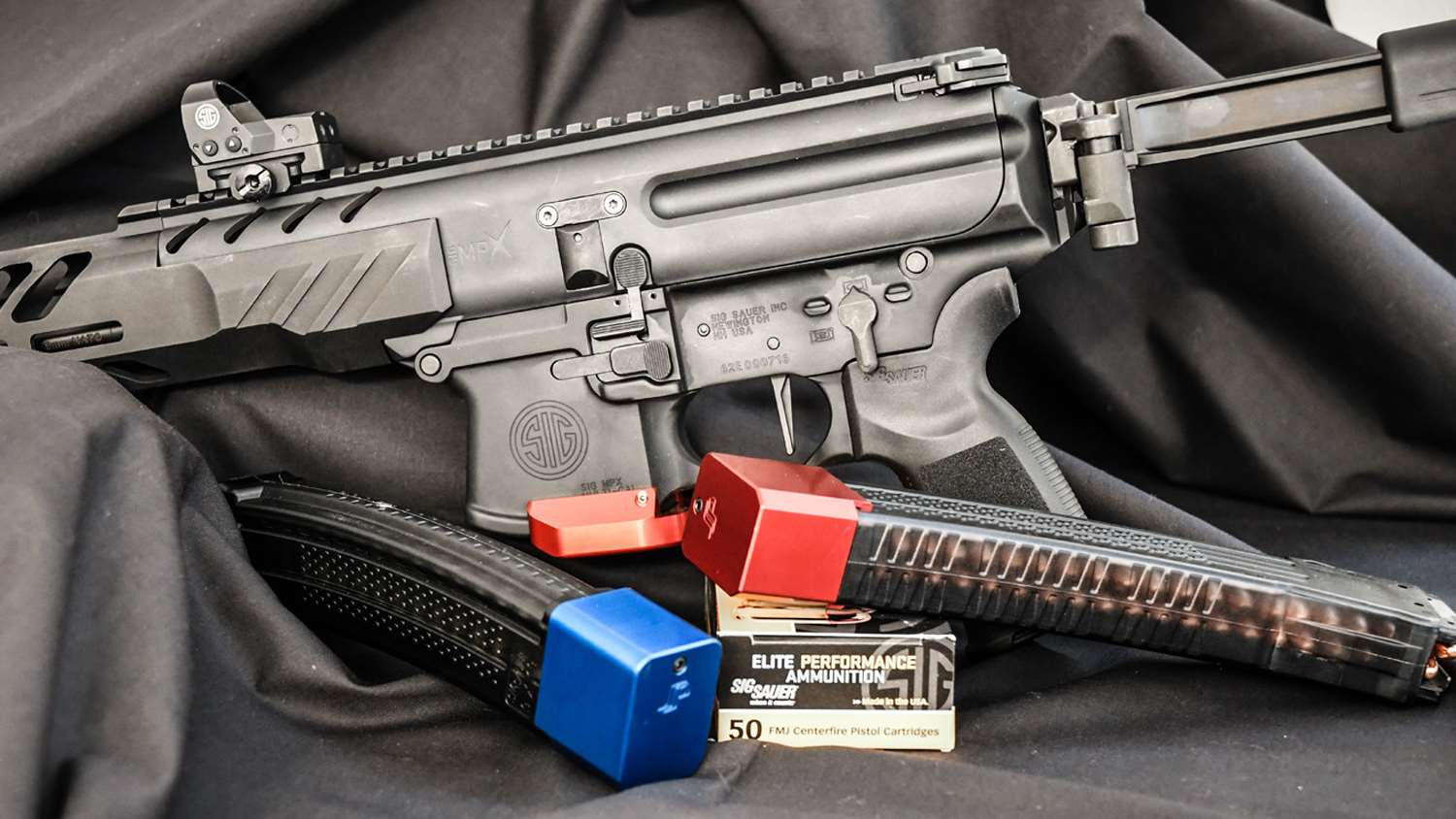
Jake and I were able to get out to a Steel Challenge match on March 10 at the Riley Conservation Club. We shared the MPX once again using the SIG 147-grain ammo. The gun functioned flawlessly for the entire match. There had been no cleaning or lubrication of this gun since it arrived, so the gun is reliable right out of the box. Jake had a good match and finished in second place overall behind a very dedicated and talented steel shooter. My finish was on down the list.
There are a couple of things to consider with the MPX. The magazines worked very well with the extended base pads, but they are going to take magazine pouches designed for them. The square shaped mags will not fit in your standard-style magazine pouches. This is not a criticism at all but something to consider. A Clay County magazine pouch is not going to work for a serious competitor.
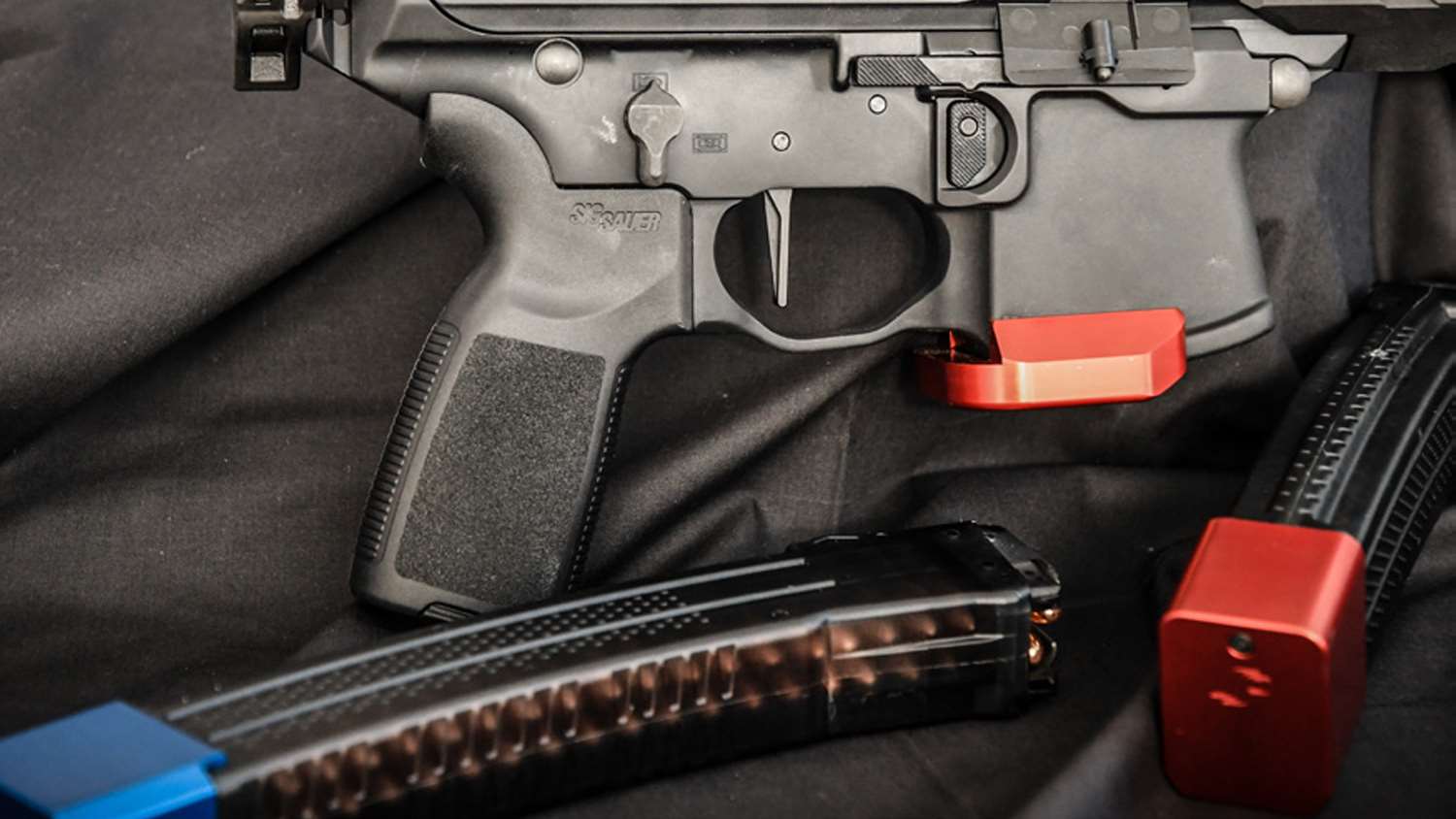
The other consideration would be the stock. The stock worked fine for me during the USPSA match, but finding the dot for the first shot in Steel Challenge did not work well. Also, if the shooter has long arms, this stock is not going to be the one to use in Steel Challenge. I had a hard time with a good cheek weld during the steel match. Jake echoed the opinion that more cheek weld would be nice while shooting steel, but obviously was not as affected. If the MPX was going to be my Steel Challenge carbine and I was going to get serious in that division, I would change out the stock with something that provided a better cheek weld. Due to the gun’s design, the stock is easy to remove and replace with whatever the shooter’s personal preferences are, so the competitor could have multiple stocks ready for different shooting sports.
After the steel match, Jake took the MPX to Florida so it was available at the SIG demo bay during the Multi-Gun Nationals. SIG sent their 124-grain Elite ball FMJ and the 147-grain Match Elite Competition JHP. There were zero malfunctions during the three days the MPX was on display, consuming over 2,000 rounds of ammo. The 147-graing Match Elite 9mm ammunition was the favorite of those who ran the MPX on the supplied Action Target PT Scouts in the demo bay. With the nice bright clear red dot of the Romeo 1, the competition ammunition and a race-ready MPX, everyone really enjoyed shooting it.
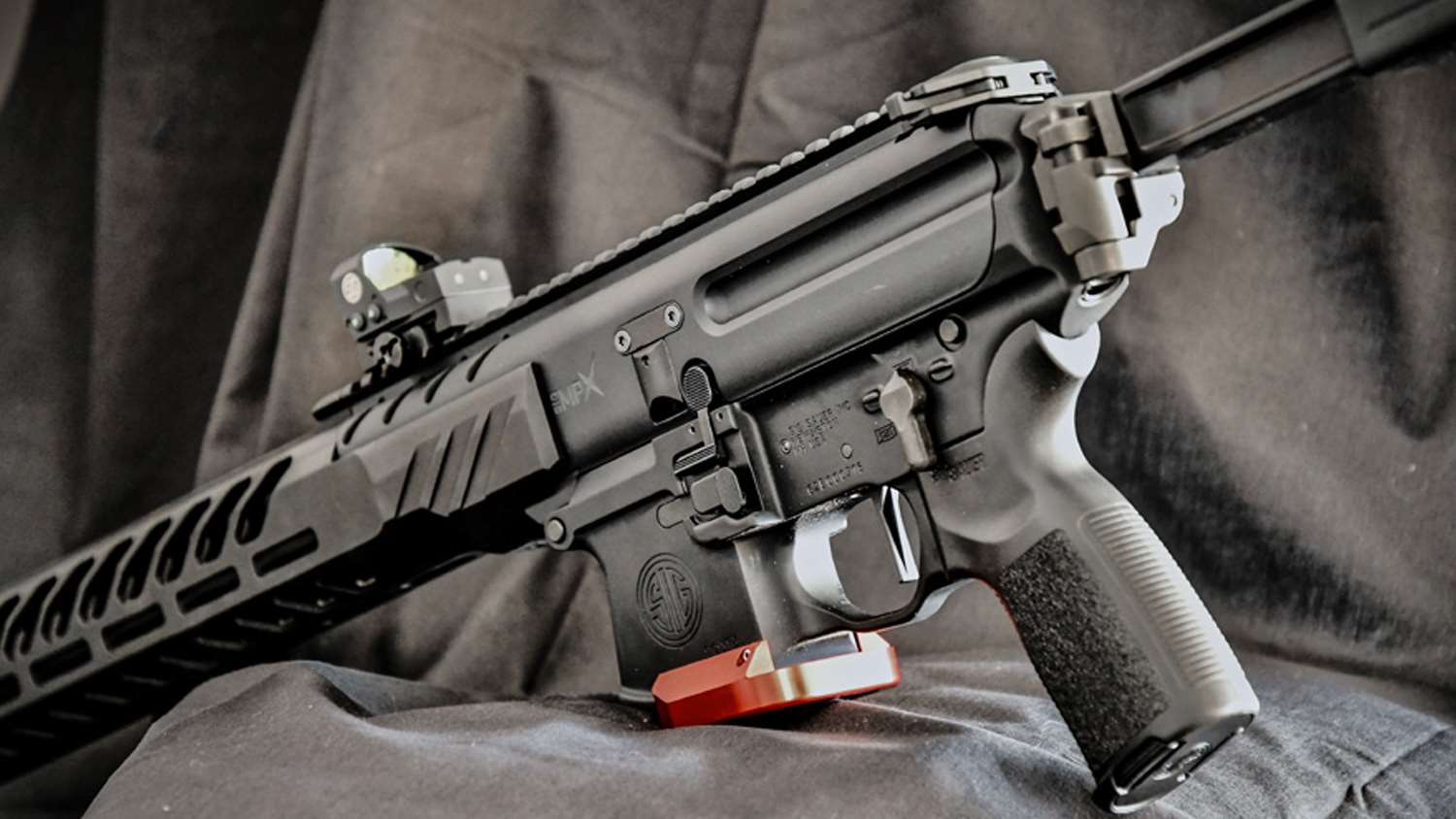
Overall, the MPX was a very pleasant shooting experience. The gun functioned perfectly for both Jake and myself during these matches, as well as the few test runs that were done between matches. The SIG ammo meshed very well with this carbine, not a surprise considering the manufacturer. The MPX is advertised as ready for competition right out of the box. Our testing found that to be the case. The MPX is very comfortable for running field courses in USPSA, and the ambidextrous controls do not leave the left-handed out in the cold. The magazine release is well located and should be easy to master for reloads on classifiers and standards courses for anyone who is willing to practice a little. For those folks shopping around for a carbine for either USPSA or Steel Challenge, check out the MPX from SIG Sauer. The MPX is a fine-looking gun that is ready to go racing out of the box.
MSRP is $2,016, but a quick search of the Internet finds them in the $1,700 price range (BudsGunShop.com). The Spring Precision basepads and magwells are available at springerprecision.com.
Article from the May/June 2019 issue of USPSA’s FrontSight magazine. Photos by Jake Martens.














